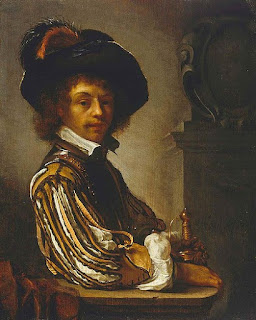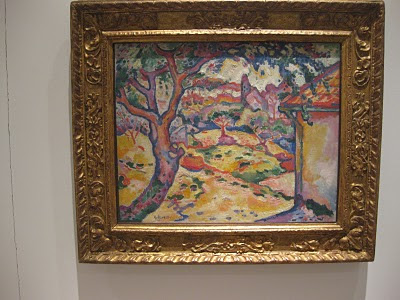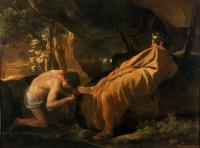Wednesday, May 30, 2012 -  documentary,Egon Schiele,Leopold Museum,Portrait of Wally,Restitution Court,Rudolf Leopold,Vienna
documentary,Egon Schiele,Leopold Museum,Portrait of Wally,Restitution Court,Rudolf Leopold,Vienna
 No comments
No comments
 documentary,Egon Schiele,Leopold Museum,Portrait of Wally,Restitution Court,Rudolf Leopold,Vienna
documentary,Egon Schiele,Leopold Museum,Portrait of Wally,Restitution Court,Rudolf Leopold,Vienna
 No comments
No comments
Art Crime Documentary: "Portrait of Wally" (Part Two)
 |
| Rudolf Leopold/The Leopold Museum |
This is a continued review of the art crime documentary "Portrait of Wally". The information presented here is from the film directed by Andrew Shea.
Lea Bondi founded St. George’s Gallery in
London. After the war, Bondi spent
several years recovering her paintings and was able to get back the ones from
her gallery but not those that had hung in her apartment, recalled her nephew Henry
Bondi.
In 1946, Bondi returned to Vienna. She went to the Restitution Court, not
for the Portrait of Wally, but for the contents of her gallery that was now
called “Galerie Friedrich Welz”.
The Austrian court declared that Welz had renovated the gallery and that
Bondi would have to pay the war criminal Welz 9,000 Schillings before recovering her
business.
Director Andrew Shea's documentary discusses the confusion about the Egon Schiele painting Portrait of Wally after World War II.
Director Andrew Shea's documentary discusses the confusion about the Egon Schiele painting Portrait of Wally after World War II.
Sophie Lillie, author of Was Einmal War
(What Once Was), said that Bondi asked Welz about the Portrait of Wally. Welz told Bondi that the painting had been erroneously confiscated with the property of another Jewish collector, Dr.
Heinrich Rieger, and given to the national collection at the Belvedere Museum.
The Rieger family had been rounded up and deported to die in a concentration
camp, Lillie said in the documentary.
Portrait of Wally was listed
incorrectly as a “drawing” not as an oil painting. “The mistake should have
been recognized immediately,” Lillie said. “Mistaking a painting for a drawing is a big mistake.”
“The idea that the director of the
National Gallery of Austria was unable to tell the difference between an oil
painting and a work on paper is clearly an absurdity,” journalist David D’Arcy told the camera.
Thomas Trenkler, Editor of Der Standard,
sums up that the Belvedere Museum “knew that the painting they had bought
didn’t belong to Rieger and that something was not quite right”.
Klaus Schröder, former Managing Director of The Leopold Museum, said: “But to imply that the Austrian Gallery would have tampered
with the sources to facilitate possible sales is totally absurd.”
Monika Mayer, Director of Provenance
Research, Austrian Gallery at the Belvedere: “Of course, to us it seems quite exceptional if we look at
it retrospectively. How can there
be a confusion between a drawing an a painting from a famous collector,
Heinrich Rieger, and a famous collector, Heinrich Rieger, and a famous oil
portrait of Wally Neuzil? That seems extremely mysterious and we can’t explain
it. I didn’t go as deeply into the
details of the case as others have. I don’t actually think there was a conspiracy.”
Bonnie
Goldblatt, former Senior Special Agent for Department of Homeland Security, who had worked on the case said in the documentary: “My
belief is that the museum wanted to amass a huge art collection and it was good
timing. A law had been passed then
that forbid the exportation of work by Austrian artists, which came in handy. If Jewish collectors weren’t in
Austria, they would have to sell it to the museum instead of taking it out of
the country to sell.”
Even
the U. S. Army had documented numerous times that the painting had not belonged
to the Riegers and told the Belvedere the same thing, asserted Sharon Cohen
Levin, Chief of the Asset Forfeiture United in the United States Attorney’s
Office for the Southern District of New York.
In
a deposition in Vienna with American prosecutors,
Dr. Rudolf Leopold spoke of his relationship with Lea Bondi: ‘I met Ms. Jaray in London in
1953. She sold me a few Schiele
pieces and explained to me that she would like to talk to me about a picture
that she had once owned.’
Ernst
Ploil, attorney and art collector, explained in the documentary: “Leopold knew who owned looted
art. He knew about the problems of
not being able to export those pieces of art. He got in contact with the owners who had left Austria or
had been forced to leave Austria” and offered to purchase the recovered looted
art.
Hector
Felicano, author of The Lost Museum: “Right after the war there was such
turmoil in the art market that you could get just about anything you wanted if
you had the money.”
In
1954, Lea Bondi asked Leopold to watch over the Portrait of Wally, to make sure
it didn’t disappear, according to Robert Morganthau.
Again,
the film returns to Leopold’s deposition in United States v. Portrait of Wally:
“The question is, what did she say to you, and what did you say to her?”
Leopold: “Well, I already explained this before. After we had struck a deal regarding a couple of sheets, works on paper, that is, she asked me, where is the Portrait of Wally? And I said in the Belvedere.”
Leopold: “Well, what you’re asking me – and I then said, well, what you’re asking me to do is simply impossible to do, because if I just went to the Gallery and asked them to hand me over the picture, they will probably throw me out.”
Journalist
D’Arcy narrates what happened next: ‘Leopold returns to Vienna and barters with
the museum for a Schiele he has for this painting. He already had Egon Schiele’s self-portrait of the same date
so for him it was a case of uniting the pair of pictures’.
The Austrian Gallery had exchanged “Vally from Krumau” for “Portrait of a boy (Rainerbub)”.
The
next thing Lea Bondi knew, according to art historian Lucille
Roussin, the painting was being exhibited as part of the Leopold collection.
Thomas
Trenkler, Editor for Der Standard: “The museum must have been afraid that the
painting would have to be given back. Thus, that the Museum sold it, or rather
exchanged it for other artworks, this was a white wash.”
This review will be continued in two days.
This review will be continued in two days.






















